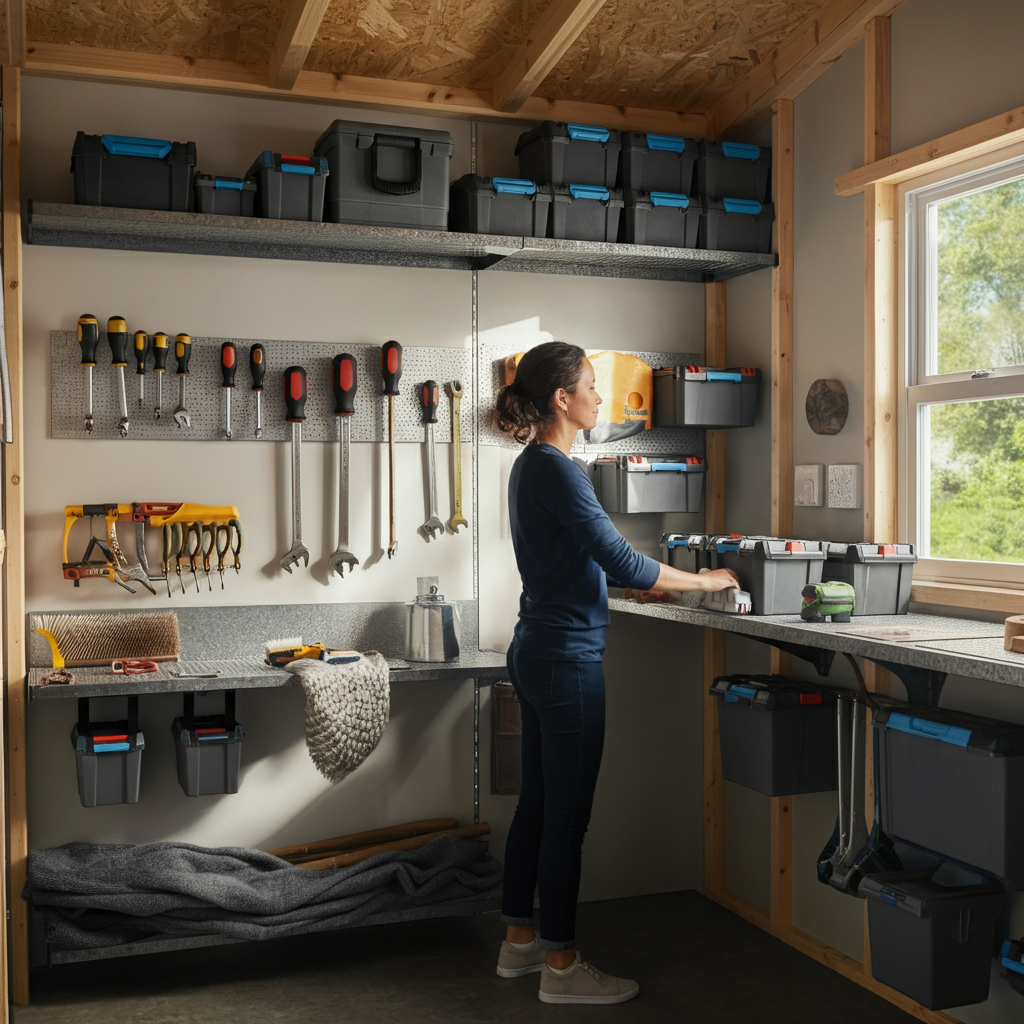Does your shed feel more like a junk room than a functional storage space? Don’t worry, you’re not alone. Sheds often become dumping grounds for tools, garden supplies, and long-forgotten items, making it impossible to find what you need. But with a bit of planning and smart organization, you can transform your shed into a tidy and efficient haven for all your necessities.
This guide will walk you through every step of organizing your shed, from decluttering to implementing clever storage solutions. By the end, you’ll have a shed that not only looks great but also works perfectly for your needs. Let’s get started!
Understanding Your Shed Space
Before you begin organizing, take a moment to assess your current shed setup. Ask yourself:
- Is there enough usable storage space?
- What are the main clutter hotspots?
- Are essential items easily accessible?
Identifying these pain points will help you determine where to focus your efforts. A quick inventory of the items in your shed will give you a clearer picture of what needs to stay, go, or find a new home.
Planning and Preparation

Set Your Goals
What do you want to achieve with your shed organization? Whether it’s creating easy access to tools, maximizing storage, or having a dedicated gardening corner, defining clear objectives will guide your decisions.
Inventory Your Items
List everything in your shed. Group similar items together—for example, tools, gardening supplies, seasonal decorations, and outdoor furniture. This gives you a clear idea of what storage systems you’ll need.
Layout and Storage Plan
Sketch your shed’s layout and think about how to best utilize the space. Consider:
- Wall storage for vertical organization.
- Floor space for heavy or bulky items.
- Clever nooks and corners for maximizing every inch.
Sorting and Decluttering

Decluttering Steps
The first rule of organization is to declutter. Use the three-category method:
- Keep items you need and use regularly.
- Donate or sell items in good condition that you don’t use anymore.
- Discard broken or unusable items responsibly.
Tips for Effective Decluttering
- Be honest about whether you’ll use something again.
- If it hasn’t been touched in over a year, it’s probably time to move it on.
- Combine duplicates, like matching shovels or pairs of pruning shears.
Categories to Simplify
Once you’ve decluttered, organize the remaining items into logical groups:
- Tools
- Gardening equipment
- Seasonal items
- Paint and maintenance supplies
Vertical Storage Solutions
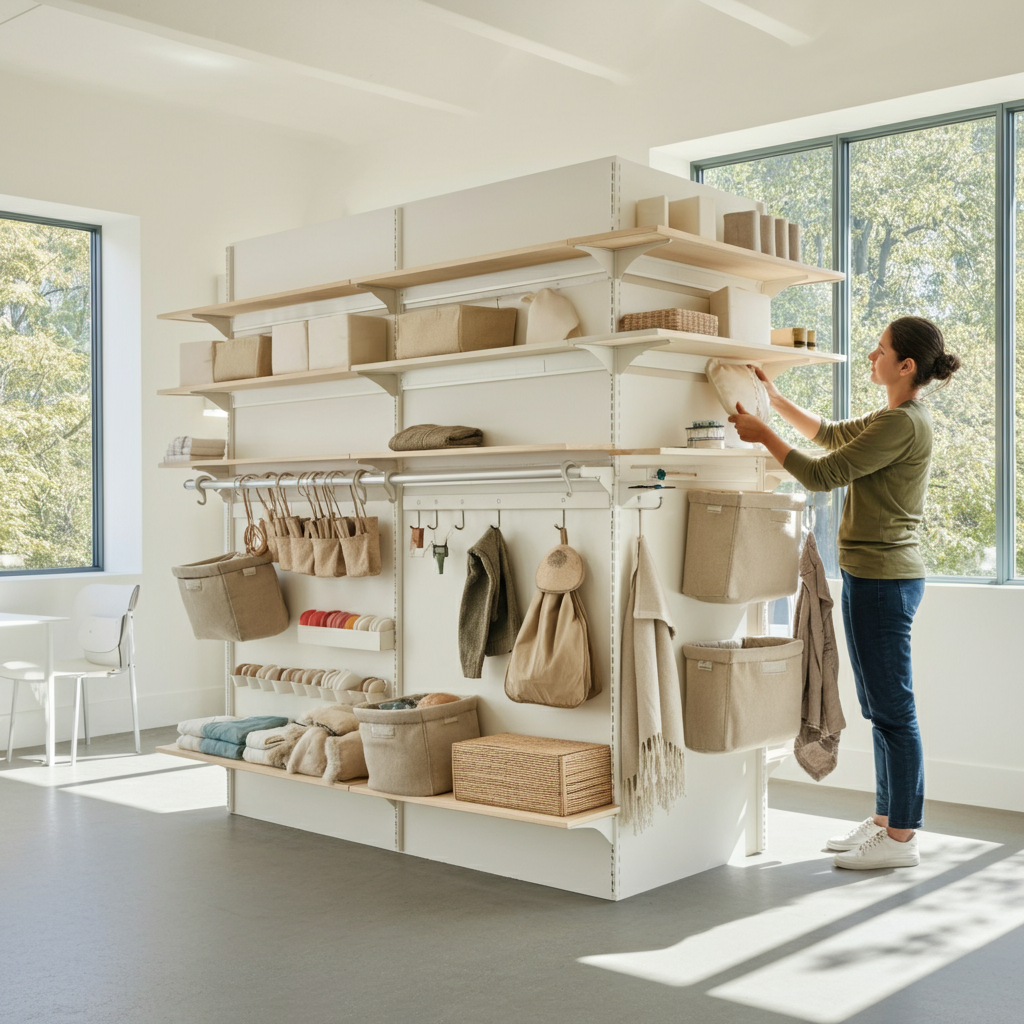
Utilizing walls is a smart way to keep your floor space clear. Here’s how to do it:
Shelving Systems
- Wall-mounted shelves are perfect for lightweight items.
- Freestanding shelves work well for heavier items and can be moved as needed.
- Go for adjustable shelves for maximum flexibility.
Pegboards
Pegboards are a shed organizer’s best friend. They’re versatile, affordable, and perfect for storing tools where you can see them. Plus, you can customize them endlessly with hooks, baskets, and holders.
Hanging Solutions
Install hooks, racks, and ceiling-mounted organizers for items like hoses, cords, and lightweight tools. Hanging storage keeps these tools both tidy and accessible.
Horizontal Storage Solutions
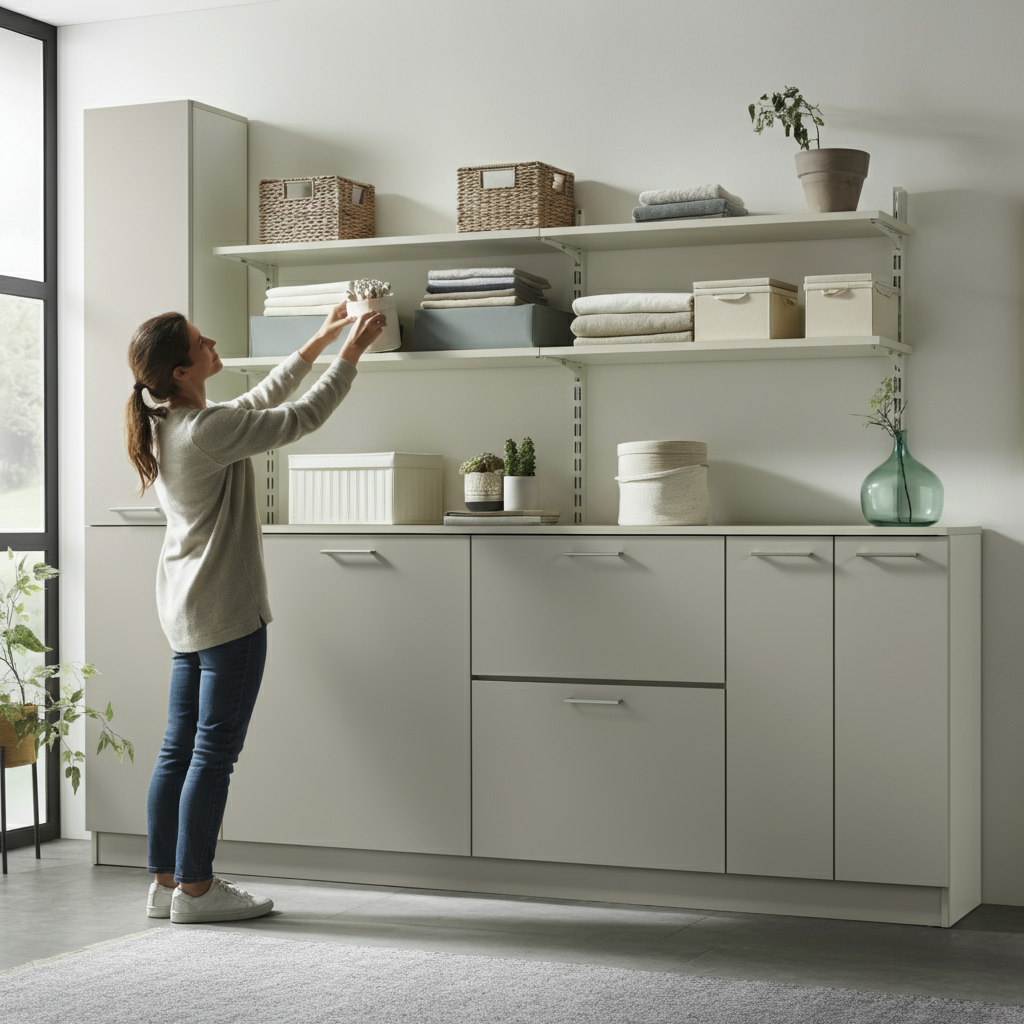
For items that can’t be hung, horizontal storage is key.
Storage Bins and Containers
Use clear or labeled bins to store smaller items like screws, gloves, and plant markers. Stackable bins maximize limited space and keep everything dust-free.
Cabinets and Drawers
Choose weather-resistant materials like metal or plastic for maximum durability. Cabinets with drawers are great for power tools and gardening supplies.
Floor Storage
Keep heavy items like bags of soil or mulch in sturdy containers on the floor. Use pallets or platforms to keep them elevated if moisture is an issue.
Tool Storage Ideas
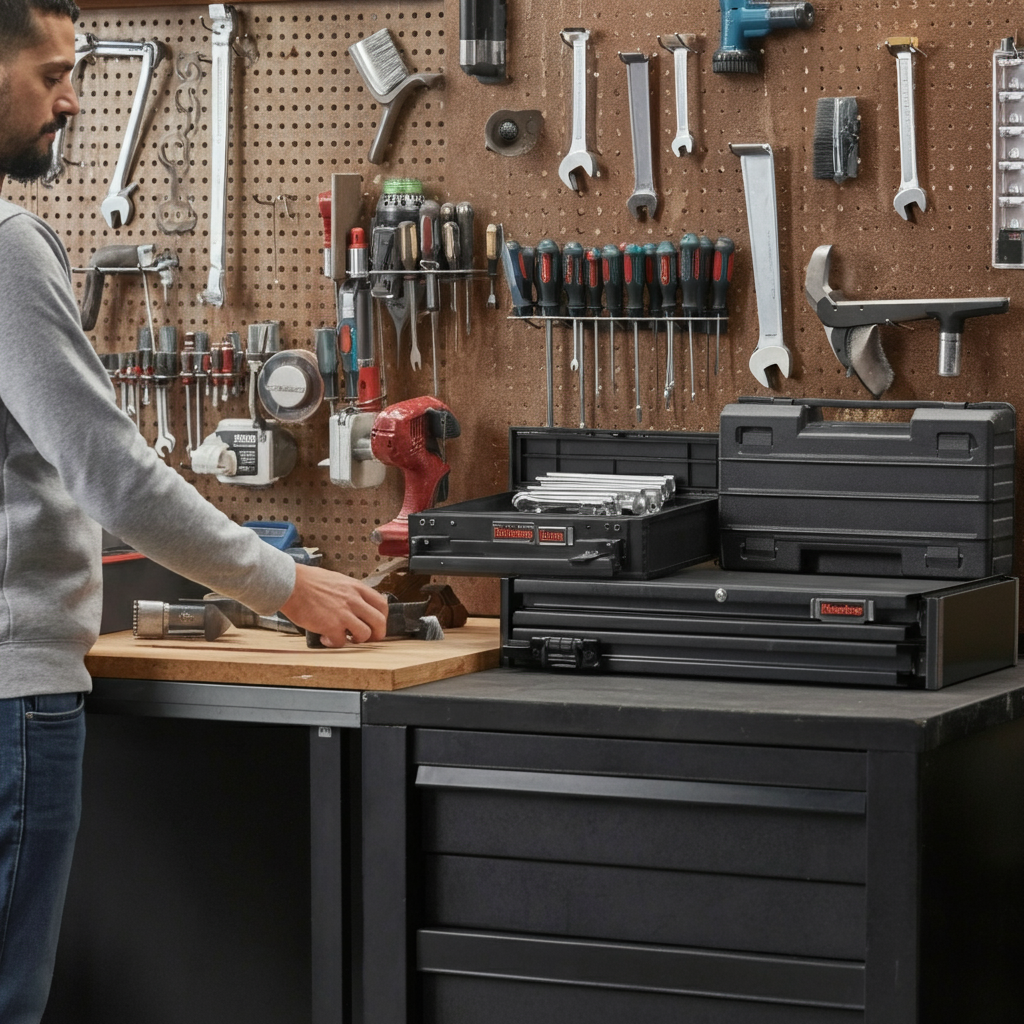
Organizing your tools makes them easily accessible when you need them.
Long-Handled Tool Storage
Racks, clips, and wall holders are ideal for items like shovels, rakes, and brooms. Store these along a single wall to keep them neat and out of the way.
Power Tool Storage
Power tools can be stored on sturdy shelves or in dedicated cabinets. Use cases or designated compartments to keep cords tangle-free.
Hand Tools
Toolboxes and organizers with compartments are perfect for storing hammers, screwdrivers, and wrenches. Rolling tool carts add portability and convenience.
Garden Equipment Storage
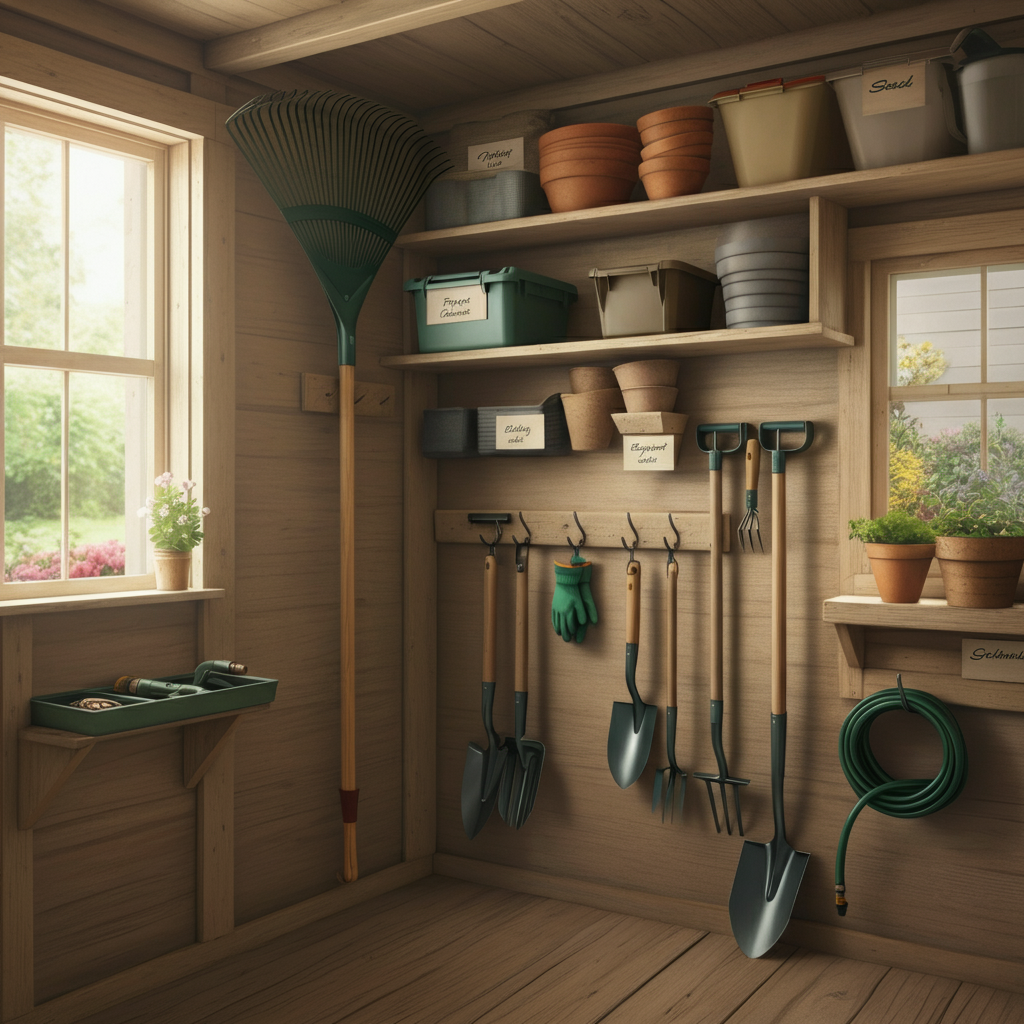
If you’re a gardener, you know how hard it can be to keep tools and supplies organized. These solutions will help:
Hose Storage
Prevent tangles and extend the life of your hose with reels, hooks, or decorative pots.
Planting Supplies
Shelving units or labeled bins make it easy to store pots, seeds, fertilizers, and gloves in one place.
Lawn Care Equipment
Lawnmowers, leaf blowers, and trimmers can be stored on racks, hooks, or sturdy stands. Always ensure safety guards are in place to prevent accidents.
Safety and Maintenance

A well-organized shed is also a safe shed. Here are some tips to maintain both safety and functionality:
Secure Heavy or Dangerous Items
Store potentially hazardous items like chemicals or sharp tools in locked cabinets, especially if kids are around.
Ventilation and Climate Control
Keep your shed well-ventilated to prevent moisture build-up, which can lead to rust and mold.
Routine Cleaning and Maintenance
Spend a few minutes each month tidying up and checking for wear or damage to your storage systems.
Additional Tips and Tricks

Maximizing Small Spaces
- Use foldable furniture to save space.
- Opt for dual-purpose storage, like benches with built-in compartments.
Budget-Friendly Solutions
- Repurpose household items, like jars for screws or a shoe organizer for small tools.
- Shop at thrift stores for affordable shelving or storage bins.
DIY Ideas
Get creative with DIY projects like building your own tool racks, pegboards, or custom shelving. Pinterest is a goldmine for inspiration.
Transform Your Shed for Good
A cluttered shed doesn’t have to be your reality. With some planning, smart storage solutions, and regular maintenance, you can turn your shed into an organized, functional space that supports your hobbies and projects.
Got your own shed organization tricks? Share them in the comments! And remember, the key to keeping your shed tidy is consistency. Once you’ve set up your organized space, a little upkeep goes a long way.
